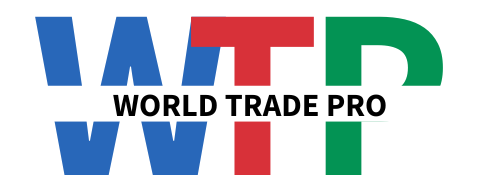Who sets the price of crude oil in the spot market?
Quote from chief_editor on October 2, 2023, 9:29 am
In a world increasingly driven by energy consumption, understanding the mechanisms behind the pricing of crude oil becomes paramount. The spot market for crude oil, though less voluminous than long-term contracts, has a profound influence on global pricing dynamics. But who sets these prices, and how?
Supply and Demand: The Fundamental Drivers
At its core, the price of crude oil in the spot market is driven by the age-old economics principle: supply and demand^123^. Global geopolitical events, natural disasters, production decisions by oil-rich countries, and shifts in consumer behavior can cause sudden spikes or drops in oil demand and supply, leading to price fluctuations.
The Key Players in the Spot Market
Delving into the intricacies of the spot market, several players are pivotal^4^:
- Crude Producers: The entities responsible for extracting crude oil from the earth. Their production decisions can significantly influence oil availability.
- Refiners: Those that transform crude oil into usable products. Their buying decisions and capacity can sway the demand dynamics.
- Professional Trading Firms: Specializing in commodities, these firms often act as intermediaries, buying and selling based on market trends and forecasts.
- Large Distributors/Consumers: Entities such as large fuel retailers, airlines, and fuel wholesalers who demand significant volumes of oil or its by-products can significantly influence the market's buying patterns.
Third-Party Price Assessment: The Arbiters of Value
While the aforementioned entities participate directly in the buying and selling processes, third-party price assessment agencies, notably Platts and Argus, hold significant sway over pricing^4^. These agencies continuously monitor trades, offers, bids, and other market-moving information. Based on their analysis, they provide a daily spot price assessment. This assessment, while reflecting the current market dynamics, also sets a precedent for future trades.
Moreover, the influence of these agencies extends beyond the spot market. Most term contracts — the more voluminous and long-term deals — use the spot prices as a benchmark, indexing their rates based on these daily assessments^4^.
Conclusion
The price of crude oil in the spot market emerges from a delicate dance between supply-demand dynamics and the decisions of key industry players. Overlaying this dynamic is the role of third-party price assessment agencies, which analyze and set the daily spot price benchmarks. Their assessments, rooted in the spot market, ripple outwards, influencing broader contract prices and, ultimately, the global energy economy.
Reference:
In a world increasingly driven by energy consumption, understanding the mechanisms behind the pricing of crude oil becomes paramount. The spot market for crude oil, though less voluminous than long-term contracts, has a profound influence on global pricing dynamics. But who sets these prices, and how?
Supply and Demand: The Fundamental Drivers
At its core, the price of crude oil in the spot market is driven by the age-old economics principle: supply and demand^123^. Global geopolitical events, natural disasters, production decisions by oil-rich countries, and shifts in consumer behavior can cause sudden spikes or drops in oil demand and supply, leading to price fluctuations.
The Key Players in the Spot Market
Delving into the intricacies of the spot market, several players are pivotal^4^:
- Crude Producers: The entities responsible for extracting crude oil from the earth. Their production decisions can significantly influence oil availability.
- Refiners: Those that transform crude oil into usable products. Their buying decisions and capacity can sway the demand dynamics.
- Professional Trading Firms: Specializing in commodities, these firms often act as intermediaries, buying and selling based on market trends and forecasts.
- Large Distributors/Consumers: Entities such as large fuel retailers, airlines, and fuel wholesalers who demand significant volumes of oil or its by-products can significantly influence the market's buying patterns.
Third-Party Price Assessment: The Arbiters of Value
While the aforementioned entities participate directly in the buying and selling processes, third-party price assessment agencies, notably Platts and Argus, hold significant sway over pricing^4^. These agencies continuously monitor trades, offers, bids, and other market-moving information. Based on their analysis, they provide a daily spot price assessment. This assessment, while reflecting the current market dynamics, also sets a precedent for future trades.
Moreover, the influence of these agencies extends beyond the spot market. Most term contracts — the more voluminous and long-term deals — use the spot prices as a benchmark, indexing their rates based on these daily assessments^4^.
Conclusion
The price of crude oil in the spot market emerges from a delicate dance between supply-demand dynamics and the decisions of key industry players. Overlaying this dynamic is the role of third-party price assessment agencies, which analyze and set the daily spot price benchmarks. Their assessments, rooted in the spot market, ripple outwards, influencing broader contract prices and, ultimately, the global energy economy.
Reference:

